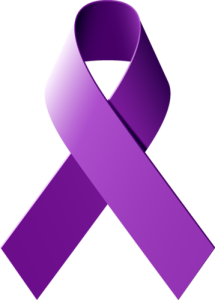 Every nine seconds in the United States a woman is assaulted or beaten. In the United States, an average of 20 people are physically abused by intimate partners every minute. This equates to more than 10 million abuse victims annually (NCADV 2015). October is Domestic Violence (DV) Awareness Month. For victims of domestic violence this awareness is not just a once month out of the year occurrence. It is an hour by hour, day by day, week by week & month by month occurrence. For some, domestic violence is the “norm” of life. Their lives have never been void of some type of abuse. Many victims of DV are in a cycle of generational physical, emotional, verbal or sexual abuse. The great news is this cycle can be broken with assistance from domestic violence organizations, counseling, family, friends & other resources. With help, a person can transition from domestic violence victim to a survivor of domestic violence.
Every nine seconds in the United States a woman is assaulted or beaten. In the United States, an average of 20 people are physically abused by intimate partners every minute. This equates to more than 10 million abuse victims annually (NCADV 2015). October is Domestic Violence (DV) Awareness Month. For victims of domestic violence this awareness is not just a once month out of the year occurrence. It is an hour by hour, day by day, week by week & month by month occurrence. For some, domestic violence is the “norm” of life. Their lives have never been void of some type of abuse. Many victims of DV are in a cycle of generational physical, emotional, verbal or sexual abuse. The great news is this cycle can be broken with assistance from domestic violence organizations, counseling, family, friends & other resources. With help, a person can transition from domestic violence victim to a survivor of domestic violence.
The National Coalition Against Domestic Violence (NCADV) defines domestic violence as the wilful intimidation, physical assault, battery, sexual assault, and/or other abusive behavior as part of a systematic pattern of power and control perpetrated by one intimate partner against another. It includes physical violence, sexual violence, psychological violence, and emotional abuse. The frequency and severity of domestic violence can vary dramatically; however, the one constant component of domestic violence is one partner’s consistent efforts to maintain power and control over the other.
Domestic violence affects every community regardless of age, socio-economic status, sexual orientation, gender, race, religion or nationality. Only about half of domestic violence incidents are reported to police. African-American women are more likely than others to report their victimization to police. The most common reasons for not reporting domestic violence to police are that victims view the incident as a personal or private matter, they fear retaliation from their abuser, and they do not believe that police will do anything about the incident (Feminist Majority Foundation, 2015).
As a former Rape Crisis Counselor at the Women’s Center of Tarrant County and a Counselor & Facilitator at Safe Haven of Tarrant County, I have provided support and education to many victims of domestic violence. Through my experience I have found many women did not know they were being abused. They thought the abusive behaviors in their relationships (both intimate & non-intimate) was “just something people in relationships go through”. Once informed and educated their perspective changes. They find they don’t deserve to be abused. They are a victim. Most clients want to change but this is easier said than done because there is an emotional or some other attachment to the abuser. Because of this, it is very hard for a victim to make changes in their lives. It is a process.
Some red flags of abuse are: Embarrassing or putting you down; Looking at you or acting in ways that scare you
Controlling who you see, where you go, or what you do; Keeping you or discouraging you from seeing your friends or families; Shoving, slapping, choking or hitting you; Attempting to stop you from pressing charges; Pressuring you to have sex when you don’t want to or do things sexually you’re not comfortable with.
If you can answer yes to any of the above red flags you may be in an abusive relationship.
If you are a victim of domestic violence or know someone who is, have them contact Transitions Counseling for direction & support. If you need immediate help call 911 or the National Domestic Violence Hotline at 1-800-799-7233 (SAFE).
Antoinette Kincaid, MA, LPC


